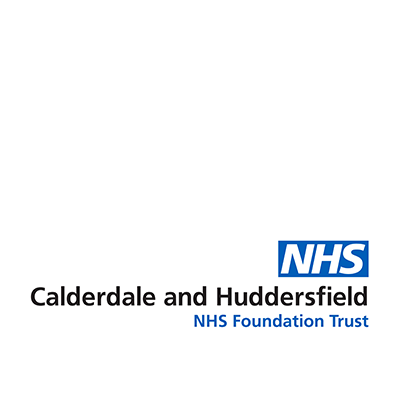
Themes
- Incentivising staff
- Improving theatre productivity
- Optimising patient tracking
Calderdale and Huddersfield NHS Foundation Trust (CHFT) employs over 6,900 staff delivering a range of services from two main hospitals, Calderdale Royal Hospital and Huddersfield Royal Infirmary. Services are also delivered across a number of community sites and local health centres in Calderdale. In 2023/24 the trust treated more than 114,000 patients as inpatients or day cases, 178,000 accident and emergency attendances and delivered over 4,300 babies. The trust's five-year strategic plan – which aligns with the wider strategy for West Yorkshire ICS – includes a commitment to enhancing productivity and demonstrating value for money.
Incentivising staff to expand capacity and tackle waiting lists
As is well documented, the pandemic brought significant disruption to hospital capacity. During the pandemic, hospitals shifted resources towards opening more beds to tackle Covid-19 which, with little spare capacity, meant elective care services were hugely disrupted. Following the pandemic, CHFT took the decision to pause elective work for slightly longer than a number of system partners and faced further challenges with staffing levels across their theatres – with sickness rates remaining high and significant staff turnover both during and after the pandemic across theatre teams. The trust’s elective care backlog peaked at 3,970 patients waiting over 52 weeks in March 2021. To reduce the trust's waiting list, CHFT began utilising insourcing and outsourcing to rebuild the capacity lost over the pandemic. However, CHFT's clinicians were frustrated by the cost implications and felt that continuing with insourcing and outsourcing didn't represent a suitable permanent solution to the additional capacity the trust required to tackle the care backlog sustainably.
In April 2022, CHFT rolled out a new cost per case system which sought to pay all theatre staff on the number of patients that have been operated on rather than the amount of time they have worked. Initially, the model started on a relatively small scale across only a few different specialties but has now been expanded across all surgical specialties. The system is completely voluntary and is only available to staff working weekends. The bespoke payment model was welcomed by theatre staff. The cost per case rates were set at a value that provided both value for money for CHFT and the NHS in comparison to outsourcing, but also at a rate that would incentivise colleagues to participate in cost per case lists and maximise throughput. The trust found the cost per case lists were often oversubscribed, with staff behaviours also changing with increased patient engagement, decreased turnaround times between procedures and with a commitment to continue delivering high quality care.
Since April 2022, the trust has operated on 2,075 patients across the 270 weekend surgical lists. The cost per case model has had a positive impact on improving productivity levels and reducing the trust's elective care backlog. Over 2023, CHFT reduced the number of patients waiting over 52 weeks from 1,130 to 11, a reduction of 99%. Furthermore, in December 2023, CHFT was the top performing trust for capped theatre utilisation at 84.8%. In parallel to the success of the cost per case model, a key factor in improving the trust's elective performance has been its focus on improving the tracking of patients. This has resulted in the trust being consistently one of the strongest performers for waiting list accuracy. The trust manages its referral to treatment (RTT) performance by analysing specialty waiting lists and breaking patient pathways down into their component parts so that capacity can be focussed appropriately as well as ensuring booking systems and processes are supporting the chronological treatment of RTT patients, including tackling health inequalities.
Changing behaviours through a new theatre improvement model
In support of the trust's elective recovery plan, CHFT introduced a new theatre improvement model to help transform and modernise its surgical theatre work. Rather than engaging with expensive external consultancies to design and implement change in theatres, the trust went through a restructuring process to free-up a clinical role to focus purely on transformation and modernisation, rather than on the day-to-day management of theatres. Through this model the trust has been able to establish collaborative groups for each surgical specialty comprised of surgeons, anaesthetists, theatre teams and operational managers who are all jointly tasked with delivering continuous improvements in their theatres. By engaging with all the different staff groups across theatres, this improvement model has facilitated specialties to understand how their internal processes could be improved or streamlined, what barriers to performance they are collectively experiencing, as well as using data to monitor performance and identify opportunities for improvement. Central to the model is bringing staff together to create a culture of openness and inclusivity to identify where performance could be improved. The improvement model has been received well by staff who have felt empowered to identify efficiency opportunities and thereby support improvements in productivity and optimising performance.
Reflections
In its recovery from the pandemic, CHFT has revolutionised its approach to tackling its elective care backlog – with significant success. By introducing a bespoke payment model that incentivises staff to work on weekend surgical lists and investing in optimising the tracking of patients, the trust has made significant inroads into reducing the overall size of the waiting list as well as reducing waiting times for patients. Furthermore, the trust's theatre improvement model has helped to embed a focus of improvement throughout the trust's surgical specialties, resulting in CHFT being one of the top performing trusts for theatre utilisation. Both initiatives have been spearheaded through an approach which sought to empower and engage staff to identify opportunities where productivity could be improved, that would ultimately benefit the patients they serve.